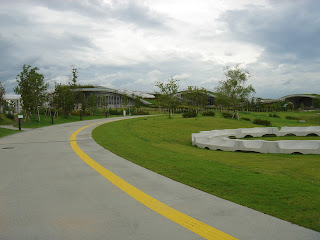White U
Architect: Toyo Ito
Location: Tokyo, Japan
Function: Private House
Complete: 1976 (removed in 1997)
The architect Toyo Ito’s sister and her family had lived in a high-rise apartment. Following her husband's death to cancer, she requested that her brother, the architect, build a house for her and her daughters where they could enjoy the close contact with the soil and plants that their former home had lacked. She also suggested that the house be L-shaped to enable all members of the family to have visual contact with one another. By coincidence, the site next to the Ito’s house was for sale and it was the same place that she had lived before she was married.
The house changed its initial L-shape to become a concrete construction with a U-shape, a form that would create greater light effects and a stronger relationship between the inhabitants. The U-House consisted of two long corridors, one of which ended at the girls' rooms, the other of which led through the kitchen and bathroom and onto the mother's bedroom. Both of the corridors were dark and led into the light - a source originating from the arc of the U.
This multi-use space used for playing, dining and meditating, had its walls and ceiling painted white and floor covered with a carpet, also white. In this space, the light was diffused and gave a soft texture, but a cut in the ceiling directed the daylight in a straight diagonal line. The powerful light effects were reinforced by the pure whiteness of the interior, which seemed flat and without any three-dimensionality.
Many argued that this was a house for mourners, and eventually the house was demolished. What are left now are photographs of this project that a concerned brother took over to help his sister cope up with the loss of her husband and her daughters’ father.


































